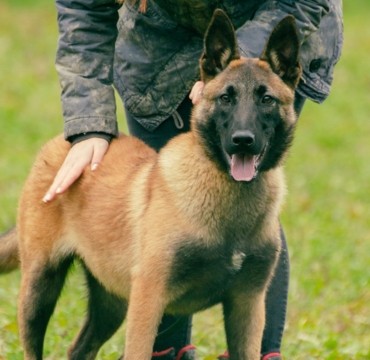Give it more life
Tips for taking care of your dog's health and safety
Perfect Autumn for Training! Make Your Dog Respond to Its Name Easily
Education
·
October 24, 2024
Autumn is one of the best times of the year to train your dog.
10 Keys for Your Dog to Respond to Its Name:
1. Choose an Appropriate Name.
The first step is to choose an appropriate name for your dog. Short names with
clear sounds are usually easier for dogs to recognize. A name of one or two syllables with contrasting sounds (like "Tobi" or "Luna") is a good option, as
it is easy to distinguish from environmental noise.
2. Make Positive Associations
For your dog to respond to its name, it needs to associate it with something positive. Every time you say its name and it pays attention, reward it with something it likes: a treat, a
pet, or even words of praise in a cheerful tone. This will help your dog associate its name with a pleasant reward.
Example of practice: Call your dog by its name. The moment it
looks at you, offer it a treat. Repeat this process several times a day during
short sessions.
3. Avoid Negative Use of the Name
Make sure your dog's name is not associated with negative situations or scolding. If you call your dog to reprimand him, he may associate his name with unpleasant experiences and avoid responding. Always use his name in positive or neutral contexts.
4. Training in Calm Environments
Start training in a distraction-free environment so your dog can focus on you. Initially, train at home or in a safe, quiet place. As your dog improves his response, you can gradually increase the level of distraction by taking him to the yard or the park.
5. Don’t Repeat His Name Too Much
When you call your dog, avoid repeating his name several times in a row. If you say his name just once and wait for him to look at you, he will learn that he needs to respond as soon as he hears it. If you repeat his name many times without a response, the dog will learn to ignore it. The key is patience: give him time to react.
6. Reinforcement through Play
Use play to reinforce learning. You can do simple exercises like hiding and calling his name so he can find you. When he finds you, reward him with affection or a toy. This type of activity not only reinforces the positive association but also strengthens the bond between you both.
7. Use the Name Consistently
For your dog to learn its name, it is essential that you use it consistently. Always use the same name and ensure that everyone who lives in the house does the same. This will help avoid confusion for the dog and facilitate its learning.
8. Gradually Removing Distractions
Once your dog responds confidently in quiet environments, start increasing the level of difficulty. Call its name when there is some distraction, such as other people or sounds. This will teach your dog to focus on you no matter what is happening around it.
9. Be Patient and Persistent
Every dog learns at its own pace, so it is important to be patient and persistent. Do not get frustrated if your dog does not respond immediately. With consistent practice and positive reinforcement, your dog will learn to recognize its name and respond appropriately.
10. Do Not Abuse the Name
Remember that your dog's name should not be used to command it all the time, but to get its attention. Once the dog responds, give a specific command, like "come" or "sit." This way, the name becomes a signal for it to pay attention to you, and not a command per se.
Teaching your dog to respond to its name is one of the first and most important lessons you can give. An approach based on positive reinforcement, patience, and consistency will allow your dog to learn quickly. By following these tips, you will be one step closer to having effective communication and a closer bond with your furry Companion.
Give it more life
Get to know your dog better





